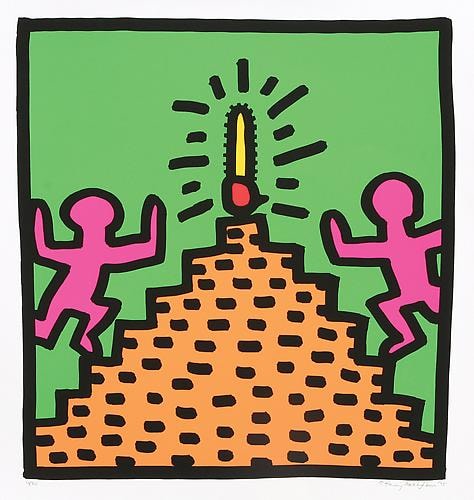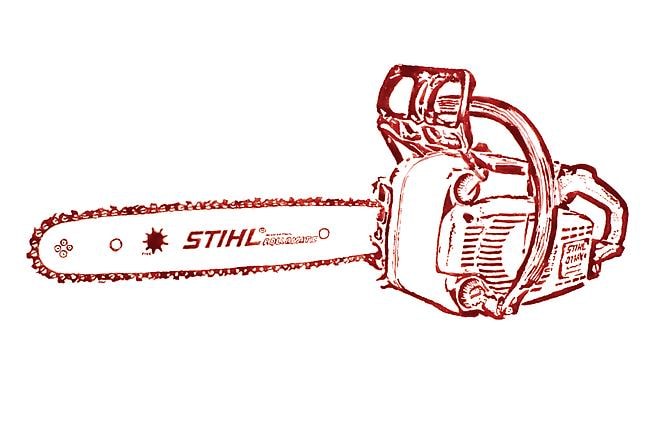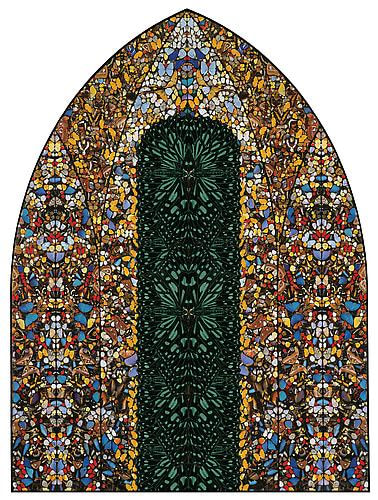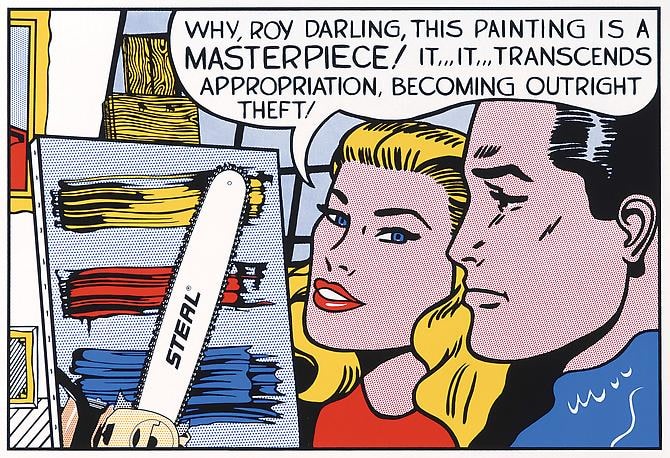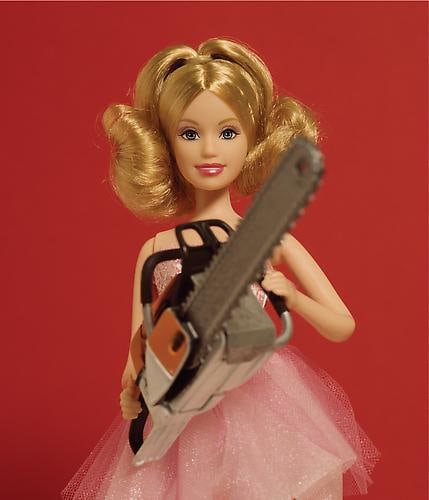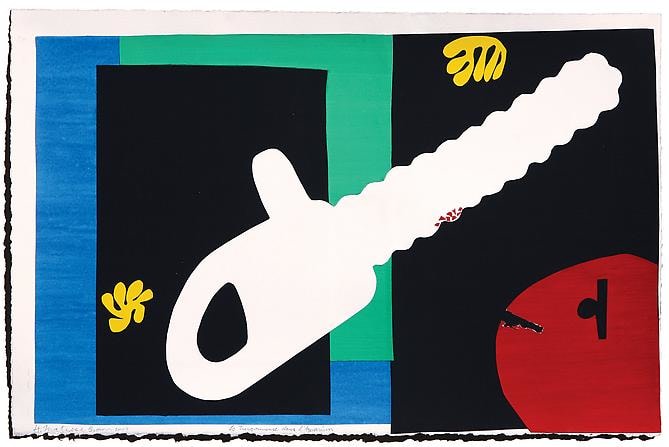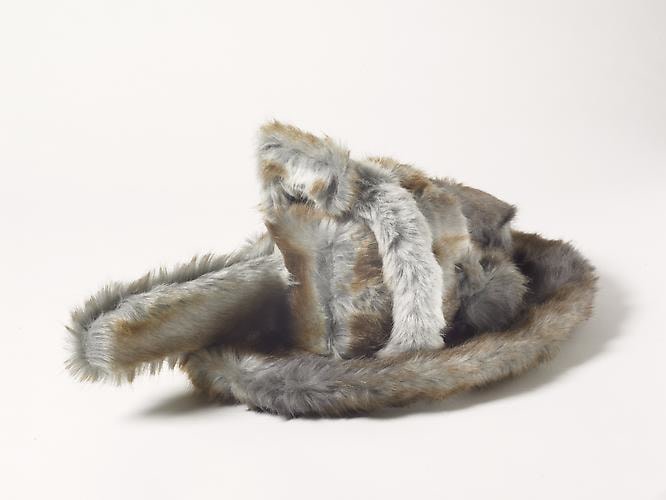Hugh Brown first cut his teeth as a chainsaw collector and punk rock aficionado; an unlikely pairing that spawned a Grammy award-winning music-packaging design artist and an obsessive appropriation artist compelled to insert chainsaw references into brilliant forgeries of Ed Ruscha, Jackson Pollack, Ed Keinholz, John Baldessari and dozens more contemporary art heavy hitters.
While the images stand on their own, there is humor and wit lurking within each Allegedly creation for the true art insider to uncover. Take the Hiroshi Sugimoto piece entitled Vista Theater (Texas Chainsaw Massacre 2) - Brown rented out the theatre and used a large format camera and an extremely long exposure to capture the entire film on a single print, just as Sugimoto did in his photographs of old American movie palaces and drive-ins as an expression of time. Or the Alexander Calder wire sculpture depicting a chainsaw held up by a three-person pyramid entitled Three Acrobats, One Chainsaw – a nod to both Calder’s primary medium and his fascination with the circus.
Each piece is as unique as the story behind it. He studied Hans Namuth’s footage of Pollock’s wrist movements, bought the same brand of gouache as Henri Mattisse and used Bruce Nauman’s neon fabricator to spell out Was/Saw in place of the iconic Raw/War. Not only are the works so convincing that many mistook them for authentic pieces when shown last year at the California State University Fullerton Grand Central Art Center but the process by which they were fabricated is an artistic expression entirely unto itself.
A photographer, printmaker and assemblage artist for over 35 years, Brown has had seven solo shows and many group shows including two at the San Francisco Museum of Modern Art and three at the Triton Museum of Art. But Brown’s standout achievement is a second place finish in the “Design a Chair for Barbie” competition sponsored by Vitra Design Museum, Metropolis Magazine, Mattell and W – not because of the second place finish but because the entry caused a fist fight amongst the judges.
Never boring, always controversial and now for the first time – for sale.


